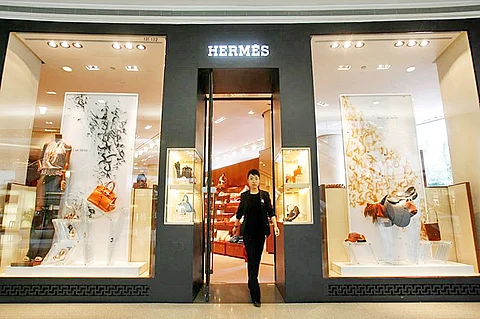
- NEWS
- the EDIT
- COMMENTARY
- BUSINESS
- LIFE
- SHOW
- ACTION
- GLOBAL GOALS
- SNAPS
- DYARYO TIRADA
- MORE

A flurry of viral TikTok videos has thrown the global luxury fashion industry into a spotlight it never asked for. In these short clips — often filmed in dimly lit warehouses or bustling factory floors — self-proclaimed Chinese manufacturers reveal what they claim is the industry's “best kept secret”: that some of the world’s most coveted designer goods, including bags from Hermès and leggings from Lululemon, are allegedly made in China and sold to Western consumers at outrageous markups.
These videos come on the heels of escalating trade tensions between the U.S. and China, including a proposed 145% tariff on Chinese-made goods by former President Donald Trump. While the policy is causing concern among importers and retailers, it’s the online reactions that have lit a firestorm of debate, with millions of TikTok users questioning what they’re truly paying for when buying luxury.
The most viral videos follow a familiar formula: a factory worker or alleged original equipment manufacturer (OEM) stands in front of shelves stacked with what look like designer products. “We make them here,” they claim, offering direct sales to viewers at a fraction of the retail price. Some go further, claiming to be the OEM behind big-name brands like Lululemon and Hermès, with prices for luxury items dropping from thousands of dollars to under $100.
One such user, Wang Sen, appears in front of shelves lined with what he claims are Birkin bags, offering deals that seem too good to be true. The videos are often swiftly removed by TikTok, but not before being reposted and reshared by eager users hoping to uncover the next consumer hack. Apps like DHgate and Taobao — known for affordable Chinese goods — have climbed the U.S. app store rankings in the wake of these videos, reflecting surging consumer interest.
Yet fashion experts and supply chain analysts warn that the truth is far murkier than these TikTok soundbites suggest.
Fashion writer and industry observer Derek Guy was quick to debunk the most popular of these videos. “The price of the bag was wrong. The components were wrong. The leather wasn’t what he said it was,” Guy told NPR. “He wouldn’t discuss the stitching or the work that goes into it.”
While China has long been a manufacturing powerhouse, especially in textiles and apparel, the leap from high-quality dupe to authentic luxury product is a wide one. True OEMs working with luxury brands are typically bound by strict non-disclosure agreements and cannot publicly disclose their clients — let alone sell similar-looking products online.
Lululemon, which was specifically named in some of the videos, issued a firm denial, stating, “We do not work with the manufacturers identified in the online videos and urge consumers to be aware of potentially counterfeit products and misinformation.” The company notes that while it does work with factories in China, only about 3% of its final goods are produced there, with most manufacturing distributed across countries like Vietnam, Cambodia, and Peru.
So, are luxury goods secretly made in Chinese factories before being labeled “Made in Italy” or “Made in France”? Not quite — but not entirely untrue either.
The supply chains of luxury fashion brands are notoriously opaque. According to EU rules, a product can be labeled “Made in Europe” if its last substantial transformation occurs there. That could mean assembling pre-cut materials or sewing on a label in Italy or France — even if the raw materials or hardware were manufactured in China.
“The fashion supply chain is so fractured,” said fashion journalist Dana Thomas in a BBC interview. “You’ll have the knit of a sweater milled in one country, dyed in another, and sewn together in a third. The final stitching could take place in Europe, which is enough for the label.”
Paul Roeland, a supply chain expert with the Clean Clothes Campaign, agrees. “There is a lot of production going on in China, even for luxury brands,” he said. “It’s not as simple as the video makers suggest, but neither is it entirely false.”
Louis Vuitton maintains that its leather goods are “exclusively produced” in France, Spain, Italy, and the U.S., while Gucci claims that 95% of its production remains in Italy. Hermès, whose Birkin bags are at the center of many TikTok conspiracy videos, insists its flagship leather goods are handcrafted in-house in France, with intricate techniques that are difficult to replicate.
Despite the viral claims, experts agree that the majority of these videos do not show legitimate supply chains for luxury brands. Most likely, the products are either high-quality counterfeits or off-brand items mimicking designer styles. And even if parts of luxury goods are produced in China, it doesn’t equate to the final product being made there — at least not by industry standards.
What’s clear is that TikTok has become a new battleground in the U.S.–China trade war, and consumers are increasingly caught in the crossfire. With tariffs looming and online misinformation on the rise, the line between truth and fiction — like the line between a real Birkin and a well-made fake — is harder than ever to see.
